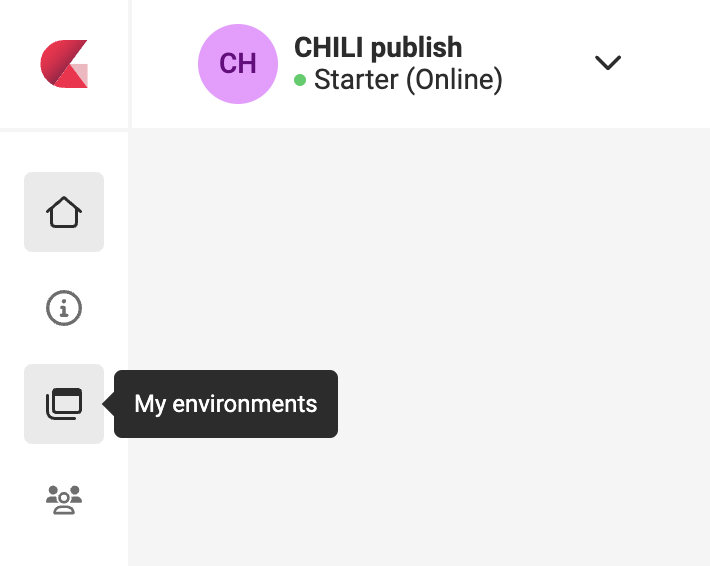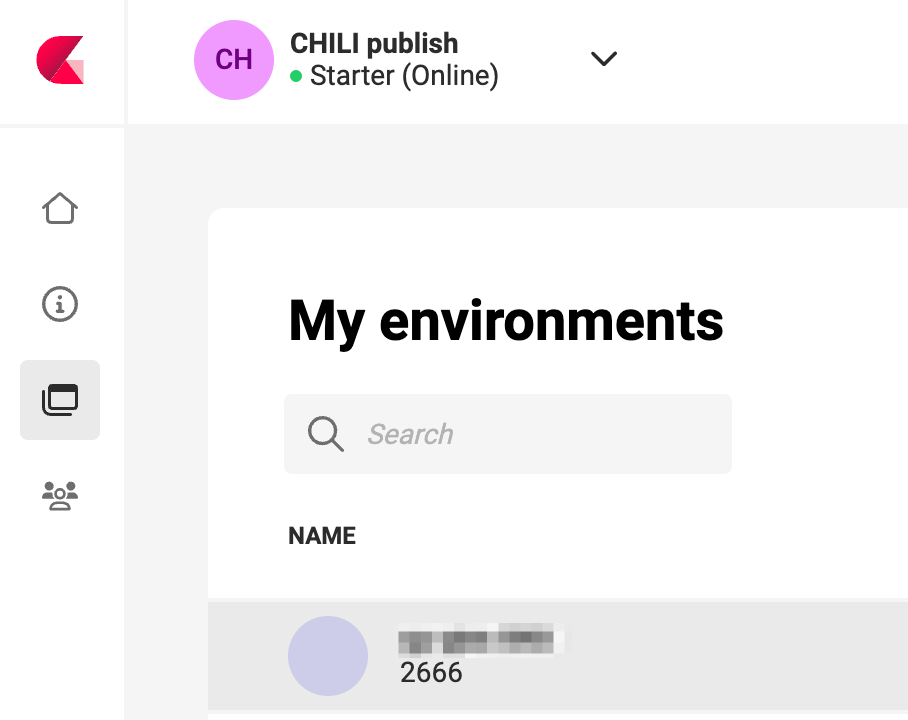Environments in CHILI GraFx
Introduction
In CHILI GraFx, an environment is a foundational concept that shapes how users interact with and manage their creative assets. Environments act as segregated, secure spaces where documents, templates, and other creative elements are stored and managed.
Key Characteristics of Environments
Applications
All applications on the CHILI GraFx platform live inside the environments.
This means, you first will need to select an environment, before you can start an application, and start working on your Smart Templates.
When entering the platform, you don't see the applications, before you choose an Environment.

Choose an environment

Once in the environment, you can select the application you want to work in.

The dropdown at the top will show all visible environments for you.
Or you could click on the CHILI GraFx logo, to return to the platform home.
Isolation
One of the crucial features of an environment is its isolation from others. No data interchange or interaction is possible between different environments1. This isolation ensures the security and integrity of data, where each environment functions independently.
Sandbox vs. Production Environments
CHILI GraFx offers two primary types of environments – the Sandbox and the Production environment. See here for more info.
Testing and Deployment
The existence of separate Sandbox and Production environments allows for thorough testing of new features. This process is crucial to identify and fix any issues before they impact the live version used by customers.
User Interface and API
Both the user interface (UI) and the application programming interface (API) of CHILI GraFx are subject to this environmental split.
Hosting and Control
CHILI GraFx environments can be hosted on multi-tenant or private tenant setups, depending on the contract. This aspect determines the control you have over the timing of updates in both Sandbox and Production environments.
-
Using the API you could build a workflow, interacting with several environments, considering you have access to all environments. Through API calls, could access assets on different environments. ↩